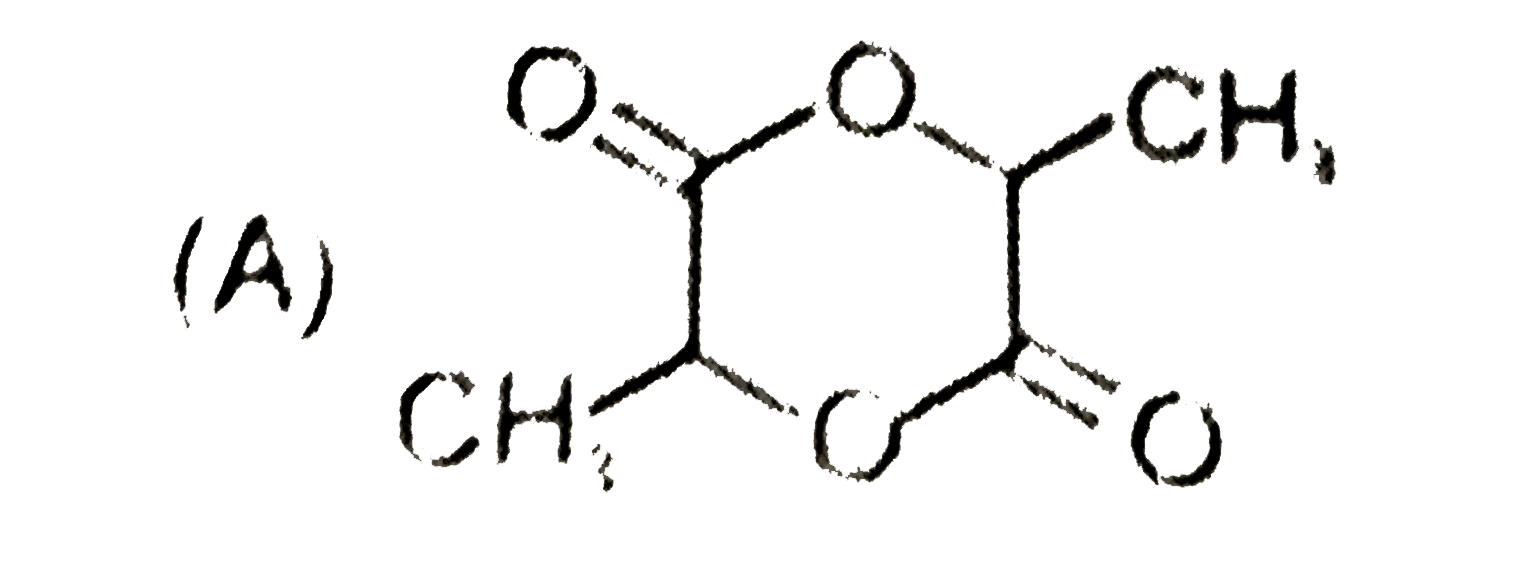The number of total final products formed in given reaction
CH3−CHOOH−−→Δ
1
2
3
4
The correct Answer is:B
To solve the problem regarding the number of total final products formed in the reaction of acetaldehyde (CH₃CHO) with hydroxide ions (OH⁻) under heat (Δ), we will follow these steps:
Step 1: Identify the Reaction Type
The reaction involves acetaldehyde (an aldehyde) and a hydroxide ion, which indicates that we are likely dealing with an aldol condensation reaction. In this reaction, the aldehyde will undergo deprotonation at the alpha carbon by the hydroxide ion.
Hint: Look for the presence of alpha hydrogens in the aldehyde to confirm the possibility of an aldol reaction.
Step 2: Deprotonation of Acetaldehyde
When the hydroxide ion (OH⁻) attacks the alpha hydrogen of acetaldehyde (CH₃CHO), it forms an enolate ion. The enolate ion is stabilized by resonance.
Hint: Remember that the enolate ion is formed by the removal of an alpha hydrogen, leading to a negatively charged carbon.
Step 3: Nucleophilic Attack
The enolate ion then acts as a nucleophile and attacks the carbonyl carbon of another acetaldehyde molecule. This step leads to the formation of a β-hydroxy aldehyde.
Hint: Consider how the enolate ion interacts with another molecule of acetaldehyde to form a new bond.
Step 4: Formation of β-Hydroxy Aldehyde
The product formed from the nucleophilic attack is a β-hydroxy aldehyde (3-hydroxybutanal). This compound can undergo dehydration (loss of water) to form an α,β-unsaturated aldehyde.
Hint: Look for the structure of the β-hydroxy aldehyde and the possibility of losing water to form a double bond.
Step 5: Dehydration to Form Final Products
The β-hydroxy aldehyde can lose a water molecule to form an α,β-unsaturated aldehyde (crotonaldehyde). This compound can exist in two geometric isomers: cis and trans forms.
Hint: Consider the geometric isomerism that arises from the double bond in the final product.
Step 6: Count the Final Products
The final products of the reaction are:
1. Cis isomer of crotonaldehyde
2. Trans isomer of crotonaldehyde
Thus, the total number of distinct final products formed in this reaction is 2.
Final Answer: The total number of final products formed is 2.
The reaction involves acetaldehyde (an aldehyde) and a hydroxide ion, which indicates that we are likely dealing with an aldol condensation reaction. In this reaction, the aldehyde will undergo deprotonation at the alpha carbon by the hydroxide ion.
When the hydroxide ion (OH⁻) attacks the alpha hydrogen of acetaldehyde (CH₃CHO), it forms an enolate ion. The enolate ion is stabilized by resonance.
The enolate ion then acts as a nucleophile and attacks the carbonyl carbon of another acetaldehyde molecule. This step leads to the formation of a β-hydroxy aldehyde.
The product formed from the nucleophilic attack is a β-hydroxy aldehyde (3-hydroxybutanal). This compound can undergo dehydration (loss of water) to form an α,β-unsaturated aldehyde.
The β-hydroxy aldehyde can lose a water molecule to form an α,β-unsaturated aldehyde (crotonaldehyde). This compound can exist in two geometric isomers: cis and trans forms.
The final products of the reaction are:
1. Cis isomer of crotonaldehyde
2. Trans isomer of crotonaldehyde
Similar Questions
Knowledge Check
The major product formed in the reaction
CH3−CH3∣C∣OH−CH=CH2+HBr→
isACH3−CH3∣C∣OH−C∣BrH−CH3BCH3−CH3∣C∣Br−CH=CH2CCH3−CH3∣C=CH−CH2BrDCH3−CH3∣C∣Br−C∣BrH−CH3The major product formed in the reaction is:
CH3−CH3∣C∣H−CH2BrCH3OӨ−−−−→CH3OHACH3−CH3∣C∣H−CH2OCH3BCH3−C∣OCH3H−CH2−CH3CCH3−CH3∣C=CH2DCH3−CH3∣C∣OCH3−CH3.Identify final product In the following reaction CH3−C∣OHH−COOHΔ−−→ product
A BCH2≡CH−COOHCCH3−C∣∣O−COOHDCH3−CH2−OH
BCH2≡CH−COOHCCH3−C∣∣O−COOHDCH3−CH2−OH
Give the major product for the reaction
CH3−CH2−C∣OHH−CH3HBr−−→
View SolutionThe major product formed in the following reaction is :
CH3−CH3∣C∣H−CH2BrCH3O−−−−−→CH3OH
View SolutionThe major product formed in the following reaction is
CH3−CH3∣C∣H−CH2BrCH3O−−−−−→CH3OH
View SolutionIdentify final product in the following reaction,
CH3CH∣OHCOOHΔ−−→ Product
View SolutionThe major product (A) formed in the following reaction is
CH3−CH3∣CH−CH2−CH3−CH−CH3∣N∣CH3−⊕CH2−CH3OH−AΔ
View Solution
